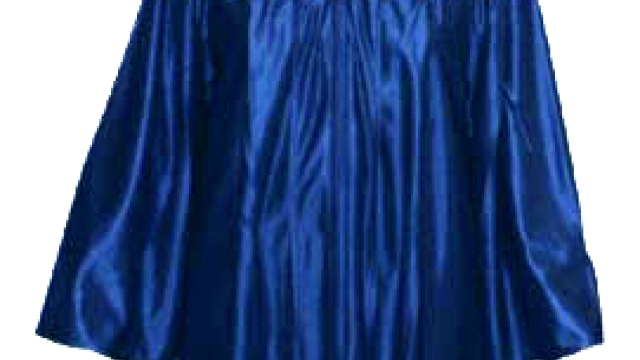
Caps and gowns hold a special significance in the world of academia, representing both tradition and achievement. From the earliest stages of education to the pinnacle of academic success, these symbolic garments have become an integral part of graduation ceremonies around the globe. Whether it’s the adorable sight of preschoolers donning miniature caps and gowns or the regal appearance of graduates receiving their master’s degrees, the symbolism behind these attire speaks volumes about the journey each individual undertakes.
When preschoolers proudly slip into their tiny caps and gowns, it signifies a stepping stone in their educational voyage. This rite of passage may seem insignificant in the grand scheme of things, but it plants the seed of ambition and ignites a sense of accomplishment within their young hearts. The sight of these little graduates, bursting with excitement and anticipation, reminds us that even at this early stage, education is something to be celebrated and cherished.
Master degree caps and gowns, on the other hand, carry a weightier meaning. They represent years of dedication, perseverance, and intellectual growth. As individuals embark on the pursuit of higher education, they enter a world of challenges, long nights of studying, and countless sacrifices. However, the moment they don their caps and gowns, all the hardships are overshadowed by the pride they feel as they approach the culmination of their academic journey. These garments become the physical embodiment of their efforts, a tangible representation of the knowledge and expertise they have acquired along the way.
Intricately woven with tradition and history, caps and gowns serve as powerful symbols that transcend language and culture. They hold the stories of countless students who have walked across stages, accepte
Symbolism of Preschool Cap and Gown
Preschool cap and gown ceremonies hold immense symbolism for both the little graduates and their families. These tiny caps and gowns represent a significant milestone in a child’s early academic journey. Dressed in miniature versions of the traditional graduation attire, preschoolers signify their readiness for the next chapter in their educational lives.
Wearing a cap and gown at such a young age instills a sense of pride and achievement in preschoolers. It symbolizes the culmination of their initial educational experience and marks the beginning of their formal educational journey. The ceremony serves as a visual representation of their growth, development, and readiness to take on new challenges.
For parents and families, seeing their young children adorned in caps and gowns is a proud and emotional moment. It signifies the hope and dreams they have for their child’s future. The symbolism of the cap and gown represents the belief in their child’s potential and promotes a sense of accomplishment for both the child and their loved ones.
In addition to representing personal achievements, the preschool cap and gown also symbolize the value of education. By introducing these ceremonial traditions early on, preschoolers learn to appreciate the importance of education and the significance of milestones. This symbolic attire encourages a positive attitude towards learning and serves as a foundation for future academic endeavors.
Overall, the symbolism of preschool cap and gown ceremonies goes beyond a mere dress-up activity. These small yet meaningful garments hold immense significance for the young graduates and their families, reflecting personal achievements, educational values, and the exciting journey that lies ahead.
Significance of Master Degree Caps and Gowns
In the realm of academia, the master degree caps and gowns hold a profound significance. They act as tangible symbols of accomplishment and mark the culmination of years of hard work, dedication, and scholarly pursuit.
The master degree cap and gown serve as a visual representation of the wearer’s educational journey. They signify the attainment of a higher level of knowledge and expertise in a specific field. These academic regalia carry a sense of prestige and honor, distinguishing those who have successfully completed a master’s degree from others in their respective disciplines.
Beyond their symbolic value, master degree caps and gowns also foster a sense of unity and camaraderie among graduates. When adorned in this traditional attire, individuals become part of a larger community of scholars, joining the ranks of those who have come before them and paving the way for future generations of academic achievement.
Moreover, master degree caps and gowns are often worn during graduation ceremonies, where they play a key role in the formal proceedings. As graduates don this regalia, it signifies their readiness to transition from the role of a student to that of a professional, equipped with the knowledge and skills necessary to contribute meaningfully in their chosen fields.
In essence, the master degree caps and gowns hold a dual significance. They not only reflect the personal achievements of the wearer but also embody the traditions and values upheld by educational institutions worldwide. These iconic symbols firmly establish a sense of pride and accomplishment, making the graduation experience all the more memorable and meaningful.
3. Exploring the Graduation Experience
The graduation experience is a special and memorable time for students of all ages, from preschool to obtaining a master’s degree. It is a significant milestone that marks the culmination of years of hard work and dedication. One iconic element that plays a central role in this experience is the cap and gown.
For preschoolers, donning a tiny cap and gown signifies their first academic achievement. These pint-sized graduates proudly wear their miniature caps and gowns as they participate in their preschool graduation ceremonies. It is a precious moment that brings joy to both the children and their families, symbolizing the beginning of their educational journey.
At the other end of the educational spectrum, master’s degree recipients also take part in the tradition of wearing caps and gowns during their commencement exercises. These individuals have spent years tirelessly pursuing advanced knowledge in their respective fields. Wearing the cap and gown represents the culmination of their academic pursuits, symbolizing the expertise and mastery they have attained.
Regardless of the educational level, the caps and gowns worn during graduation ceremonies hold a symbolic significance. They serve as a physical representation of achievement, honor, and unity. Graduates wear them with pride, as they stand together in celebration of their accomplishments and their shared journey.
The symbolism behind the caps and gowns is rich and powerful. These garments connect generations of graduates, bridging the gap between past, present, and future. They evoke a sense of tradition and an acknowledgment of the hard work and resilience required to reach this momentous occasion. As graduates walk across the stage, the caps and gowns serve as a visual reminder of their determination, dedication, and commitment to education.
